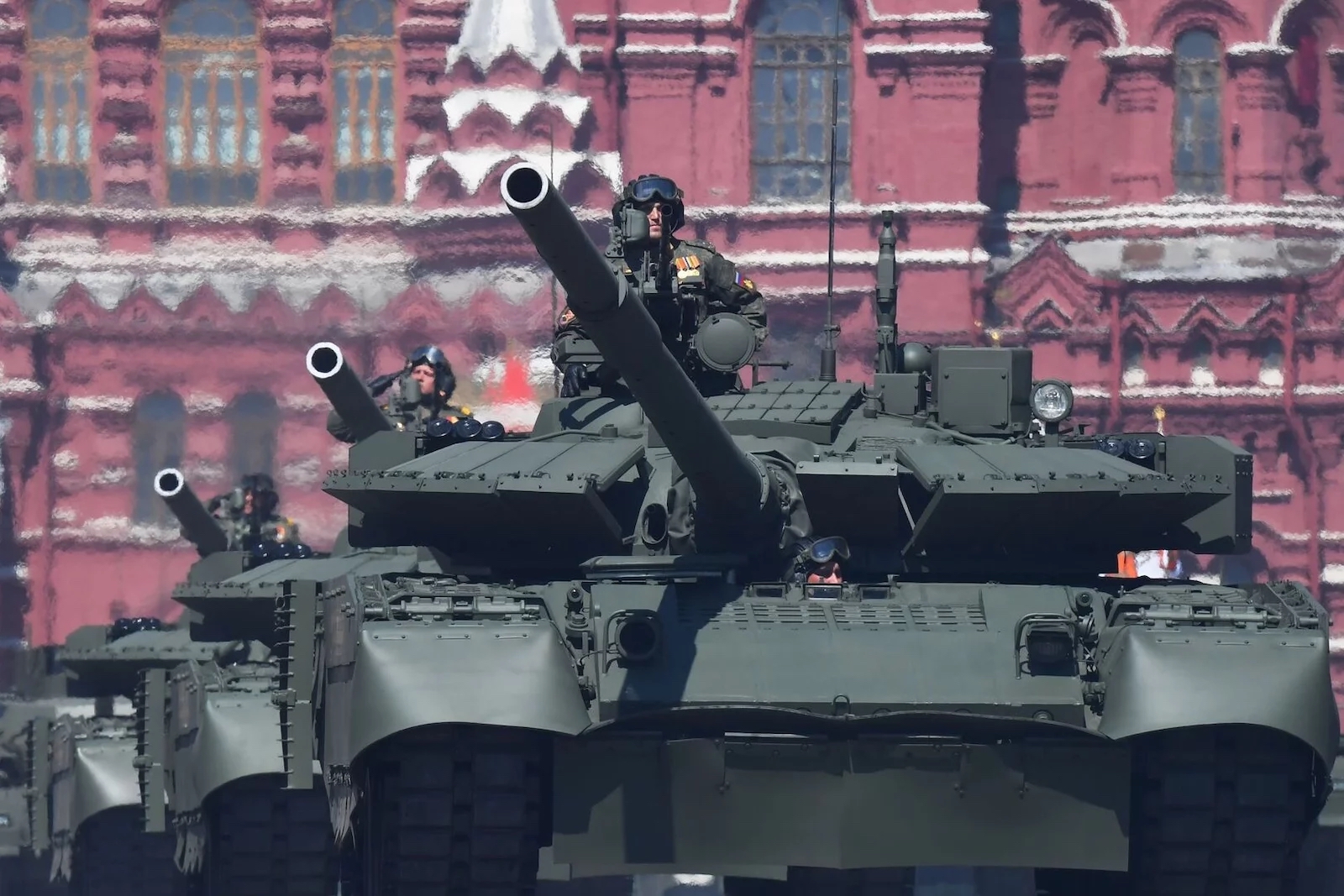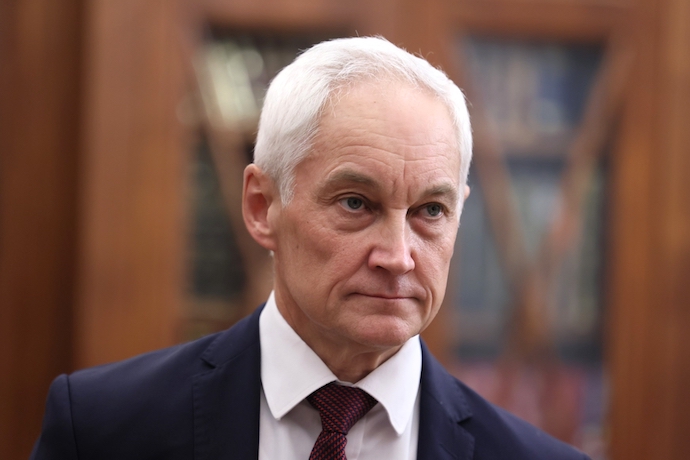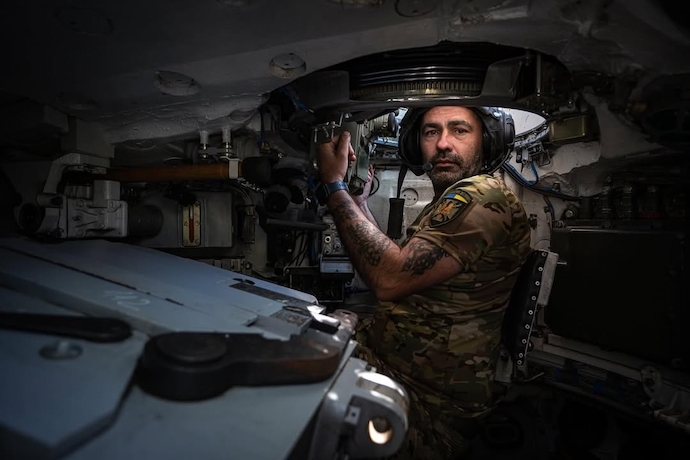
Why Russia is Betting on Old Tanks
When President Vladimir Putin named Andrey Belousov as Russia’s new Minister of Defense in May 2024, Western analysts were quick to draw conclusions. A former economy minister, Belousov’s appointment was seen as a signal that the Kremlin intended to shift the Russian economy onto a full war footing. As Current Time TV, a U.S.-funded outlet, put it, “Experts think that Belousov was given the post of Minister of Defence to put Russia’s entire economy onto a war footing.”
Such interpretations aren’t without basis. Putin himself explained the rationale on May 17, stating that Belousov would open the Ministry of Defense to “dialogue with scientific and technical centres, economic actors, [and] producers of military equipment”—a promise of innovation paired with industrial integration.
Whether this signals a genuine leap toward militarized innovation or simply a doubling down on volume is up for debate. But one metric speaks volumes: Russian defense spending is set to increase by 35% in 2025, from $128 to $174 million—2.5 times Moscow’s entire municipal budget. If nothing else, the Kremlin is putting its money where its tanks are.

But what, exactly, will that money buy?
Despite grand proclamations about Russian military prowess—Putin himself has claimed that the “internal state of the Russian military is unrivalled by any other army in the world”—the battlefield tells a more sobering story. The much-touted T-14 Armata, Russia’s so-called fifth-generation tank, has made no appearance in Ukraine outside of parade grounds. Designed to embody the cutting edge of Russian engineering, the T-14 has instead become a symbol of industrial overreach and persistent technical failures. Its $7.9 million price tag has bought Russia little more than embarrassment.
Even the T-90M—Russia’s most advanced tank to see real combat—has struggled. At $4.3 million per unit, its limited production scale (around 250 annually) cannot match the pace of battlefield losses, which reportedly exceeded 1,100 in 2024 alone. In response, Russia has leaned on retrofitting older T-90C models, which cost roughly $700,000 less and can be deployed more rapidly. Yet even this approach is running aground. Satellite imagery, cited by Meduza, shows that only about half of Russia’s pre-war tank reserves remain, most in poor condition.
The situation is no better for armored personnel carriers (APCs). Despite an expanded production line, Russia is manufacturing only around 600 APCs annually. That’s a fraction of the 1,500 confirmed losses in 2024. BMPs—infantry fighting vehicles critical to Russia’s preferred tactic of advancing in small units—are in similarly short supply.
So, where does the money go? Not into futuristic battlefield dominance, it seems, but into pragmatic militarism. The Kremlin’s approach emphasizes repair and quantity over innovation. In 2023, Russia replaced more than 1,100 tanks through refurbishing and cannibalizing older models. As BBC defense analyst Pavel Aksenov put it, “Russia needs a reliable and consistent supply of weapons which soldiers know well and can easily repair.”
And there’s good reason to avoid deploying high-end tanks on the Ukrainian front. For all their reinforced armor and electronic warfare kits, modern tanks like the T-90M remain vulnerable to $500 drones. Ukraine, too, has pulled back many of its U.S.-supplied Abrams tanks after several were destroyed by FPV drones, their fiery deaths captured in footage circulated widely online.
In many cases, modern Western tanks such as the Challenger 2 are being used more like mobile artillery—kept far from frontline combat due to their vulnerability and limited supply. Even those fitted with anti-drone gear like jammers and netting have proven less than invincible. The battlefield reality is stark: the higher the tank’s price, the more painful its loss. And drones don’t care about prestige.
The emergence of so-called “turtle tanks”—older tanks clad in makeshift anti-drone armor—reflects this adaptation. But every add-on increases weight and reduces mobility, often to absurd degrees. These sluggish fortresses become liabilities in Ukraine’s terrain-heavy theatre, which demands rapid redeployment across rivers, bridges, and fields.

Videos from the frontlines show that older tanks like the T-80, used by both Russia and Ukraine, can still go toe-to-toe with—and even defeat—newer models like the T-90. These battles underscore a recurring truth in modern warfare: it’s not the machine that wins the fight, but the crew. As military analyst Michael Gierstad notes, elite Russian tank units are typically given the best machines, while older tanks—T-55s and T-62s—are left to mobilized conscripts and prisoners.
While drone warfare has brought technical sophistication to the skies, the ground war remains surprisingly retrograde. There’s little sign of a paradigm shift in tank design on the battlefield. Instead, Russia seems poised to continue its wartime production strategy: cheap, disposable armor that can be rapidly deployed and sacrificed.
In this sense, 2025 is likely to mirror 2024. With its more modern tanks too precious to risk, Russia will likely focus on modifying and refurbishing older models. Given that both Ukraine and Russia operate legacy tanks like the T-62 and T-80, performance often comes down to crew skill, not hardware superiority. This trend points to a renewed emphasis on training rather than technology.
Yet outside of Ukraine, a new generation of tanks is being developed. The U.S. Abrams M1E3, for instance, promises a lighter frame, automatic loading, AI-assisted targeting, and even remote operation. Germany’s Panther KF51, produced by Rheinmetall, goes a step further: it integrates drone operators into the tank crew and emphasizes digital communications. These are not just new tanks; they represent a new way of thinking about mechanized warfare.
Both designs reflect lessons drawn from Ukraine: prioritize speed, reduce crew numbers, integrate drones, and embrace digitalization. In contrast, Russia’s battlefield improvisations—cumbersome add-ons and reactive armor—look like brute-force answers to problems that demand smarter solutions.
Still, this next generation of tanks is unlikely to enter the Ukrainian theater anytime soon. Until then, Russia’s military strategy will likely revolve around overwhelming attrition: build just enough, build it cheaply, and accept the loss. It’s a doctrine less about innovation than about endurance—a war of industrial stamina rather than technological edge.
As drones continue to define battlefield risk, and as tank-on-tank engagements become as much psychological as physical, the real challenge for both sides may not be building the best tank—but deciding which ones they can afford to lose.
